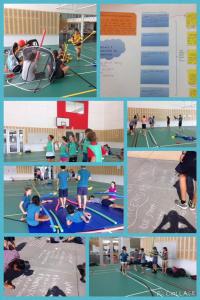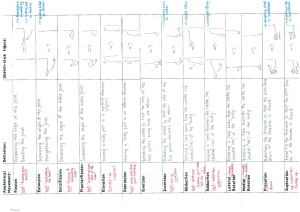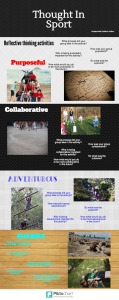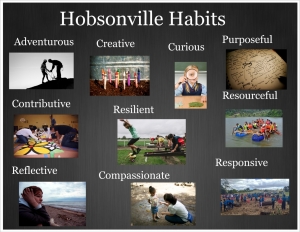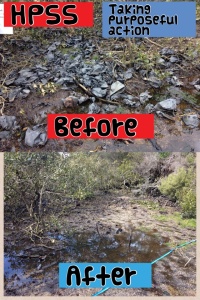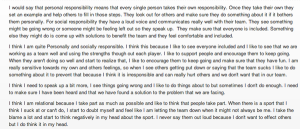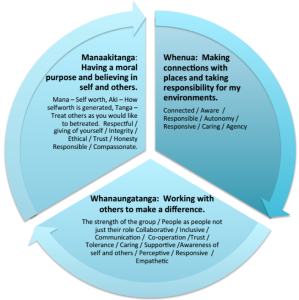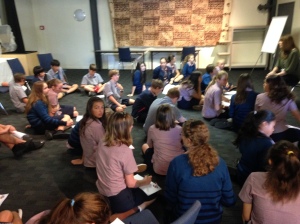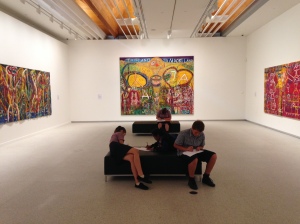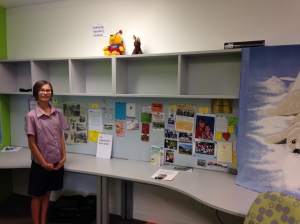Being a reflective practitioner, I have an on-going inner monologue going on, always thinking what did I do wrong there? How could I do that better? What was an alternative? How can I deepen their learning more? How can I make learning more visible? Well you mucked up there, how are you going to make things clearer?…
Is this a bad thing? Is being an over analyser an issue? Maybe, maybe not….
Maybe, just maybe, this puts you in the state of on-going learning? Not being a knower, but always looking to learn from mistakes to help learners with their own learning. To ensure you make the difference you believe you can make. High expectations for your learners and yourself.
Here is a few examples of this in recent teaching and learning…Here are the modules for me for the first semester (Term one/Term two different Key Concepts)
Key Concept Term One: Culture and Diversity
Key Concept Term two: Relationships
In SLM 1 for Year 9’s with Science and PE.
It’s all about the T’s: Timelines, timescales and team talks
Description Term One: We will explore different stages of life and development, from young to old, involving ecosytems and physical activity. This will include a couple of off-site activities, involving powerful partnerships.
Learning objectives:
Share understanding of physical activity over stages of life, by teaching others.
To explore ecosystems by considering life processes, situations and factors that change over time.
Description Term Two: We will be looking at the impact that human activity has had on our environment over time. In addition we will work in group and team situations. We will explore how we might optimise impact on team performance.
Learning objectives:
To test interpersonal skills by implementing strategies to impact on the functioning of a team. To make sense of chemistry by connecting human impact on our environment over time.
In SLM 2 for Year 10’s also with Science and PE
E² around the world-ecosystems and exercise around the world
Description Term One: In this module you will explore and make sense of the characteristics of all living things and biological ecosystems, choosing one from a country of your choice. In addition you will explore societal influences on participation in physical activity, sports, games and incidental exercise in different cultures and share by teaching others a game/activity from your chosen country.
Learning objectives:
Explore and make-sense of cultures around the world by showing an understanding of ecosystems and exercise. To share by teaching others a game/activity from the chosen country.
Description Term Two: You will investigate how human activities change the chemistry of the environment and as a result impact on the biology of ecosystems. In addition you will take part in games, sports and physical activity and attempt to improve the functioning of groups/teams.
Learning objectives:
Refine our interpersonal skills to impact on the effective functioning of a group/team.
To make sense of chemistry by exploring the impact of humans on an ecosystem.
That is the background, time for my learning and muck ups….
With the Year 9’s, I explored barriers and enablers as influences on physical activity as well as benefits and risks of exercise.
First of all I started off with what they know already…


I used hexagons that I made on http://pamhook.com/solo-apps/hexagon-generator/ here are the docs…
Getting them to go deeper, with barriers, enablers, benefits and risks…
Asking them to group them through negotiation and justification with each other…


From here I asked students to link the hexagons further into subgroups and annotate their justifications on the sheet…this is where I lost them, even though they had had great conversations in their sorting, they did not know what I meant by justify…I tried to reword this several times and still think I lost them…anyway the session ended, so I need to go back to this… @AndreaHenson_nz had a great chat afterwards about not making assumptions about what Year 9’s can do and supporting and scaffolding to ensure learning occurs. They need more scaffolding, it is not that they could not justify, they just did not understand what I was asking. I am going to focus in more by using this…

This will support and scaffold and build their justifications to allow for greater coherence in their PEEL paragraphs.
Here is a collage of the group in action exploring play and ecosystems at the local park…

With my year 10’s we are exploring barriers and enablers, with a focus on physical activity from around the world. Again I started with what they know…
Here is a picture of them exploring Maori Myths and legends through dance..also using the scaffold that I learnt was required to justify links, through my year 9’s.
I organised a collaborative task that all members of the group would have input into, each with a role and responsibility for the groups learning. To be followed by the generation of a PEEL paragraph/s answering this…
There are barriers and enablers that influence physical activity around the world. How might we use this understanding to increase physical activity for self and society?
Here is a blank copy of the task and rubric…pan down to see whole task..
Anyway, students went off and worked in groups, I thought I had scaffolded this well, but I did find myself clarifying things to the learners and some had harder aspects than others, the cultural norms part was tricky. Also there were a couple that did not pull their weight in their groups learning. So the positives are there was collaboration and most were engaged and contributing. With 53 learners in the class there were a couple that did not and that was where it was great to have the lovely @CbwynnWynn on hand to support. So in my head most benefited from the collaborative work, but the couple that did not had an impact on their group. I allowed students to select their own groups and I tend to mix this up, sometimes I do, sometimes I don’t, perhaps on reflection I could have been more purposeful in my selection.
I look forward to their PEEL paragraphs and @CbwynnWynn had a great idea to get the learners to give peer feedback against a SOLO rubric for PEEL and a chance to refine from this as well as my feedback, to allow step ups in learning to occur…watch this space for how they all go.
So yes I have mucked up, been unclear, assumed… but using that to modify and support and scaffold in an on-going way is a must for deeper learning….
